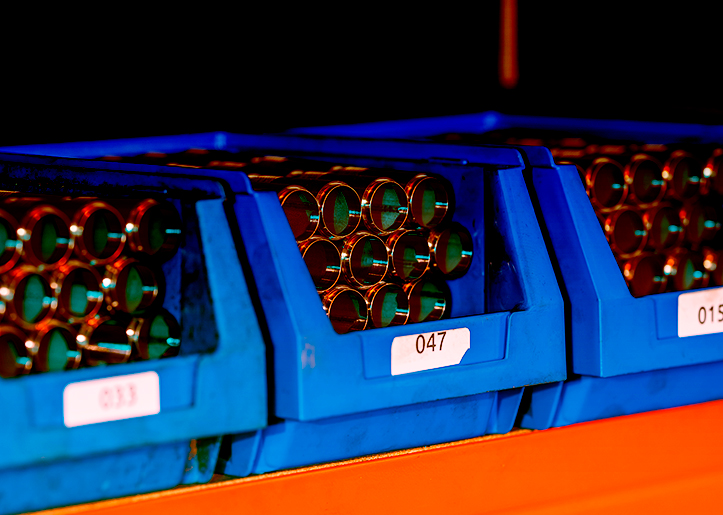Tempering is a heat treatment that is carried out on steel after hardening to achieve…

CNC turning: what it is, the process and what it is used for | EONSI
CNC turning is a process of manufacturing parts by subtraction, the machine rotates the material and removes what is not needed to create the final part.
CNC turning: what is it, the process and what is it used for
One of the most common processes in the parts machining industry is mechanical manufacturing by computer numerical control turning or CNC turning. The CNC lathe is mainly used to produce cylindrical parts, and during this process cutting movements are carried out as the part rotates CNC turning uses software technology that allows specific, high-precision parts to be produced and shaped in a short time.
One of the basic machine tools for turning parts is the lathe, but what is turning? It is a work process that consists of removing material by removing swarf while the part is turning on the lathe. This process is designed and controlled by computer software in CNC turning, which gives the required part a high degree of accuracy and precision. The end product can be parts such as nuts or bolts used in the manufacture of industrial machinery, the oil industry, consumer electronics, tools, the agri-food industry, renewable energies, among others.
What is CNC turning
CNC turning is a subtractive machining process, programmed and managed by computer numerical control.. The lathe rotates the material and removes what is not needed to create the final part, performing erosion or cutting operations on the material. CNC turning allows machining, cutting, axial and radial holes, grooves and slots, roughing, to create prototypes or final parts.
Turning is a manufacturing process that has been used for a long time. Traditional automated lathes used machining spindles to produce precision parts. Modern CNC lathes use ball screws and, using computer programs with alphanumeric data along the XYZ coordinate axes of space, automate the cutting cycle with a CAD file to obtain parts of the highest precision.
What is CNC turning used for?
CNC turning is the most suitable mechanised manufacturing process for creating functional prototypes or finished parts with a cylindrical shape, which can also have axial and radial holes, slots, recesses and flat parts. Turning allows multiple machining operations to be carried out on parts, through operations such as turning, chamfering, cutting, internal and external threading, boring, knurling, facing, reaming. Its application extends to different industries: oil, medical, furniture, machinery, agri-food, renewables, among others.
CNC turning makes it possible to manufacture minimum quantities (from a single part) at an affordable price, and with a fast delivery time, ideal for test parts or prototypes Se pueden fabricar Unique, high-precision parts can be manufactured from the customer’s 3D CAD file, reducing the chance of error. Specialised software automates the process and reduces lead times and costs for large production runs.
How is the turning process carried out?
Turning is a mechanised manufacturing process to obtain revolving parts by means of a machine tool, the lathe. This process involves a rotational movement of the part and a displacement movement of the cutting tool which, combined, give the final part its shape.
Turning consists of 3 working movements:
- Cutting movement: this occurs between the surface of the workpiece rotating with respect to the Z axis and the tool moving along the X or Z axis.
- Feed movement: while the tool moves along the X-axis, the workpiece is faced and when the tool moves along the Z-axis, the workpiece is turned.
- Passing movement: also called penetration movement or depth of cut. The tool moves in the X-axis removing material from the workpiece surface.
CNC turning centres and CNC lathes
A CNC turning centre is a complex computer-controlled machine tool, which machines cylindrical workpieces. Cutting, feed and depth movements are carried out in the process. CNC turning centres can be two-axis to multi-axis centres and allow different operations such as drilling and milling to be carried out on the same machine. Depending on the characteristics of the machine, anything from single parts to large quantities can be produced in a short time to maximise profitability.
CNC lathes allow the working mode of the tools to be adjusted by changing their operation and adapting it to the work to be carried out, the type of material or the precision of the final finish. A CNC lathe allows adjustments such as cutting speed, workpiece rotation speed, tool penetration and feed rate, and depth of the pass.
Advantages of CNC turning
CNC turning offers several advantages over conventional turning:
- Higher precision when machining revolution geometries.
- Safety, workers are not in direct contact with the cutting tools.
- Perfection, the same process is repeated with the same level of perfection.
- Reduced times in the execution of complex processes.
- Minimises human errors typical of traditional turning.
- Different machining operations are possible thanks to the automatic tool change.
- It is possible to machine different parts by changing the programming.
EONSI are experts in CNC turning. Our state-of-the-art CNC lathe technology allows us to manufacture high precision parts tailored to our customers’ requirements. We manufacture on demand in various sizes, materials and customised finishes.



